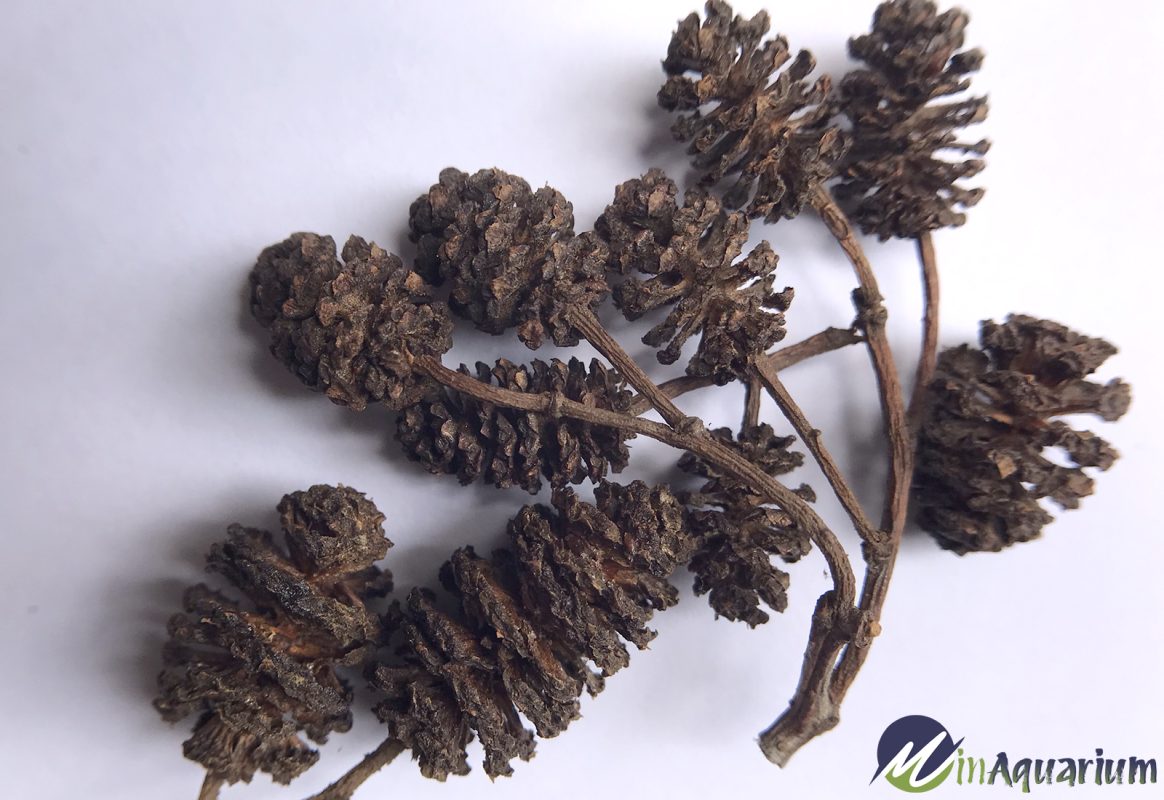Blogs
Are alder cones good for shrimp?
Alder cones, the miniature pine cones of alder trees, have gained popularity as a valuable addition to shrimp tanks. Their unique properties offer several benefits for the well-being of shrimp and the overall health of the aquatic environment. This comprehensive guide explores the reasons why aquarists incorporate alder cones into their shrimp tanks, delving into the science behind their effects and providing practical advice for their use.
Benefits of Alder Cones in Shrimp Tanks
Lowering pH Level
- Acidity Regulation: Alder cones release tannins into the water, which have mild acidic properties. This can help lower the pH level, making the water more acidic and suitable for shrimp species that thrive in acidic environments, such as bee shrimp.
- Neutralizing Ammonia: Tannins also possess antibacterial properties, assisting in the neutralization of ammonia, a harmful substance produced by shrimp waste. This contributes to a healthier and more balanced water ecosystem.
- Stress Reduction: Elevated pH levels can cause stress to shrimp, leading to reduced appetite, impaired growth, and increased susceptibility to diseases. Lowering pH with alder cones helps mitigate these issues.
Providing Food Source
- Biofilm Growth: The rough texture of alder cones creates an ample surface area for biofilm to flourish. Biofilm is a complex community of microorganisms that serve as a primary food source for shrimp.
- Natural Grazers: Shrimp graze on biofilm, removing it from the surface of alder cones and consuming the attached microorganisms. This constant feeding activity aids in maintaining the cleanliness and hygiene of the tank.
- Nutrient Rich: Biofilm is rich in nutrients, providing essential dietary components for shrimp growth, development, and reproduction.
Surface Area for Biofilm
- Increased Surface: Compared to Indian Almond leaves, alder cones offer a larger surface area for biofilm growth. This expanded surface area enhances the availability of food resources for shrimp.
- Improved Filtration: Biofilm absorbs waste particles and excess nutrients, contributing to the overall filtration process within the tank. This reduces the accumulation of harmful substances and supports a cleaner aquatic environment.
- Hiding Places: The intricate structure of alder cones provides numerous hiding spots for shrimp, especially during molting periods when they shed their exoskeleton and are more vulnerable.
Usage Guidelines
- Quantity: The number of alder cones to add to a tank varies depending on its size and water characteristics. A general guideline is to use 1 cone per 5 gallons. Monitor the water parameters and adjust as needed.
- Water Hardness: The buffering capacity of water affects the pH adjustment. Hard water with high KH resists pH changes, while soft water with low KH is more easily acidified by alder cones.
- Preparation: Before adding alder cones to the tank, boil them for a few minutes to sterilize them, remove impurities, and reduce the release of tannins, preventing excessive darkening of the water.
Long-Term Effects
- Continuous Tannin Release: Alder cones release tannins for several months. This provides a sustained supply of tannins and their beneficial effects on pH and water quality.
- Structural Decomposition: Over time, alder cones break down, creating additional hiding spaces for shrimp. The woody texture supports bacteria and biofilm growth, continuing to provide a food source.
- Aesthetic Enhancement: Alder cones add a natural aesthetic element to the shrimp tank, enhancing its visual appeal and simulating the shrimp’s natural habitat.
FAQs
- Can I add too many alder cones to my tank? While alder cones are generally beneficial, excessive use can result in overly acidic water. It is essential to monitor the pH level and adjust the number of cones accordingly.
- Do alder cones affect other tank inhabitants? Alder cones are safe for most aquarium inhabitants, including fish, snails, and plants. However, certain species, such as certain types of snails, may experience a decline in population.
- How long do alder cones last in a tank? Alder cones can last for months, providing continuous benefits. As they decompose, they will break down into smaller pieces, but their structure and beneficial properties will remain.
- Why do alder cones turn black? Over time, alder cones may turn black due to the breakdown of their organic compounds. This is a natural process and does not affect their functionality or safety.
- Can I use alder cones with other tank treatments? While alder cones are generally compatible with other tank treatments, it is always advisable to introduce one treatment at a time to prevent any adverse reactions.
Conclusion
Alder cones are versatile and beneficial additions to shrimp tanks, offering numerous advantages for shrimp health and the overall aquatic ecosystem. Their ability to lower pH level, provide a natural food source, and create surface area for biofilm growth makes them a valuable tool for maintaining a healthy and vibrant shrimp habitat. By understanding the science behind their effects and adhering to proper usage guidelines, aquarists can harness the power of alder cones to create an optimal environment for their prized shrimp.

